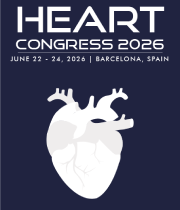Title : The art of reflection: A case report of primary percutaneous coronary intervention in dextrocardia and situs inversus
Abstract:
A 74-year-old woman presented to the emergency room (ER) with the clinical presentation of typical chest pain accompanied by cold sweat and nausea. Patient’s risk factors include menopause and dyslipidaemia. Upon arrival, her blood pressure was 106/62 mmHg, heart rate was 82 bpm, respiratory rate of 22 bpm, and peripheral O2 saturation was 98%. Her physical examination revealed that her heart sound was auscultated on the right side of her chest. Chest x-ray showed a right-sided cardiac silhouette and right-sided aortic knuckle. In 2009, it was discovered that the patient's liver and stomach were inverted. ECG of standard limb leads with right-sided precordial leads showed right axis deviation, negative p wave in lead I and aVL, positive R wave in lead aVR, and ST-segment elevation in anterior leads. She immediately underwent primary percutaneous coronary intervention (PCI). PCI was performed via right trans-radial access. Engaging the coronary ostium during coronary angiography (CAG) is an art itself in cases of dextrocardia and situs inversus. Modifications were made for image acquisition as it was necessary to achieve selective coronaries' cannulation and interpretation of images to avoid potential errors. The mirror-image angiographic views are thus useful for catheter manipulations and image acquisition. It should be noted that for both the right and the left coronary arteries in biplane angiography, LAO and RAO angulations are essentially reversed from the normal biplane angulations, keeping the cranial/caudal tilts the same. Therefore, an appropriate mirror-image view with modified angulations is mandatory to visualise coronary arteries better. In this case, we utilized a mirror image with subtle angle modification and opposite-direction catheter rotation to acquire the coronary artery visually, preserving the coronary arteries' true orientation and cardiac silhouette.
Audience Take Away
- Given the rarity of dextrocardia, patients with dextrocardia present a diagnostic challenge, especially in acute coronary syndrome, as it in?uences the interpretation of ECG and subsequent management.
- The audience will learn the unfamiliarity of anatomical coronary artery and angiographic orientation differences of coronary anatomy in dextrocardia
- The audience will learn techniques of catheter torque (counter-direction of standard procedure for ostium engagement).
- The audience will learn image projection in dextrocardia to improve the accuracy of image acquisition and interpretation during performing PCI in dextrocardia



